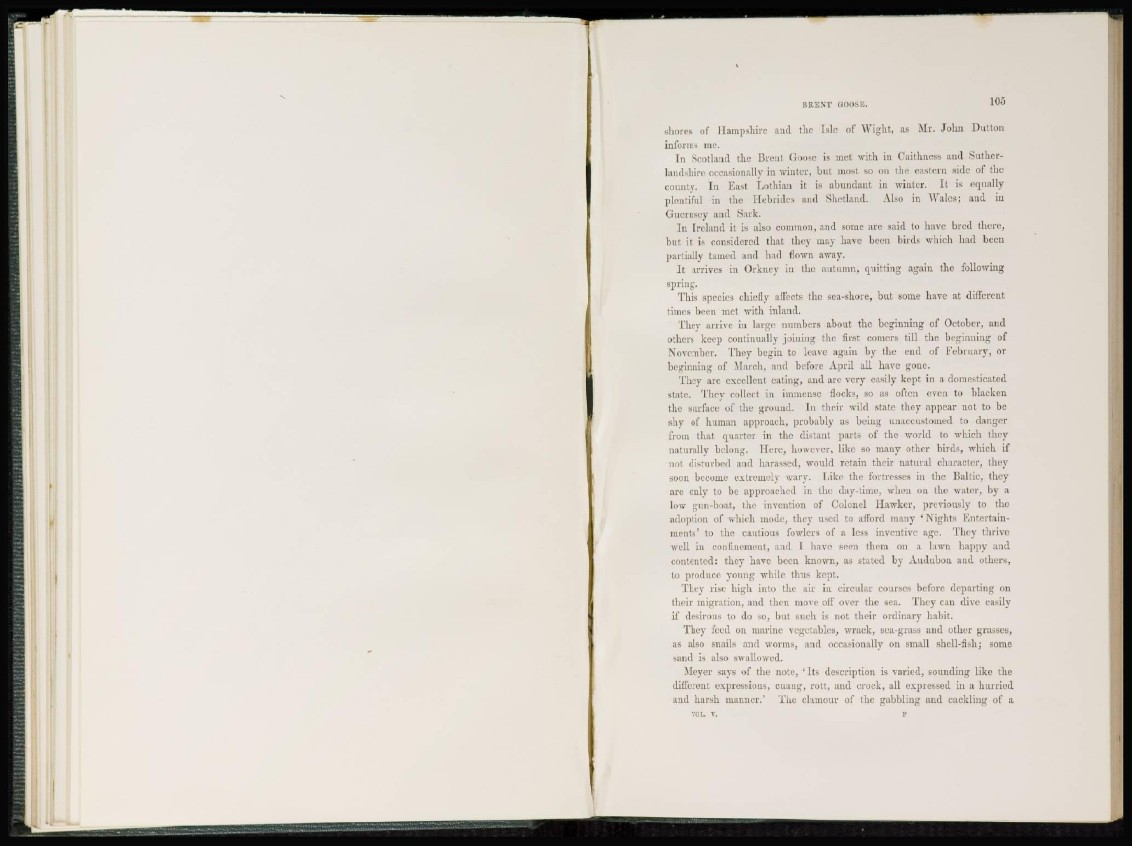
HUENT GOOSE. 105
shores of Hampshire and the Isle of Wight, as Mr. John Button
informs me.
In Scotland the Brent Goose is met with in Caithness and Sntherlandshire
occasionally in winter, but most so on the eastern side of the
county. In East Lothian it is abundant in winter. It is equally
plentiful in the Hebrides and Shetland. Also in Wales; and in
Guernsey and Sark.
In Ireland it is also common, and some are said to have bred there,
but it is considered that they may have been birds which had been
partially tamed and had flown away.
I t arrives in Orkney in the autumn, quitting again the following
spring.
This species chiefly affects the sea-shore, but some have at different
times been met with inland.
They arrive in large numbers about the beginning of October, and
others keep continually joining the first comers till the beginning of
November. They begin to leave again by the end of February, or
beginning of March, and before April all have gone.
They are excellent eating, and arc very easily kept in a domesticated
state. They collect in immense flocks, so as often even to blacken
the surface of the ground. In their wild state they appear not to be
shy of human approach, probably as being unaccustomed to danger
from that quarter in the distant parts of the world to which they
naturally belong. Here, however, like so many other birds, which if
not disturbed and harassed, would retain their natural character, they
soon become extremely wary. Like the fortresses in the Baltic, they
are only to be approached in the day-time, when on the water, by a
low gun-boat, the invention of Colonel Hawker, previously to the
adoption of which mode, they used to afford many ' Nights Entertainments'
to the cautious fowlers of a less inventive age. They thrive
well in confinement, and I have seen them on a lawn happy and
contented: they have been known, as stated by Audubon and others,
to produce young while thus kept.
They rise high into the air in circular courses before departing on
their migration, and then move off over the sea. They can dive easily
if desirous to do so, but such is not- their ordinary habit.
They feed on marine vegetables, wrack, sea-grass and other grasses,
as also snails and worms, and occasionally on small shell-fish; some
sand is also swallowed.
Meyer says of the note, ' I t s description is varied, sounding like the
different expressions, cuang, rott, and crock, all expressed in a hurried
and harsh manner.' The clamour of the gabbling and cackling of a
VOL. V. p